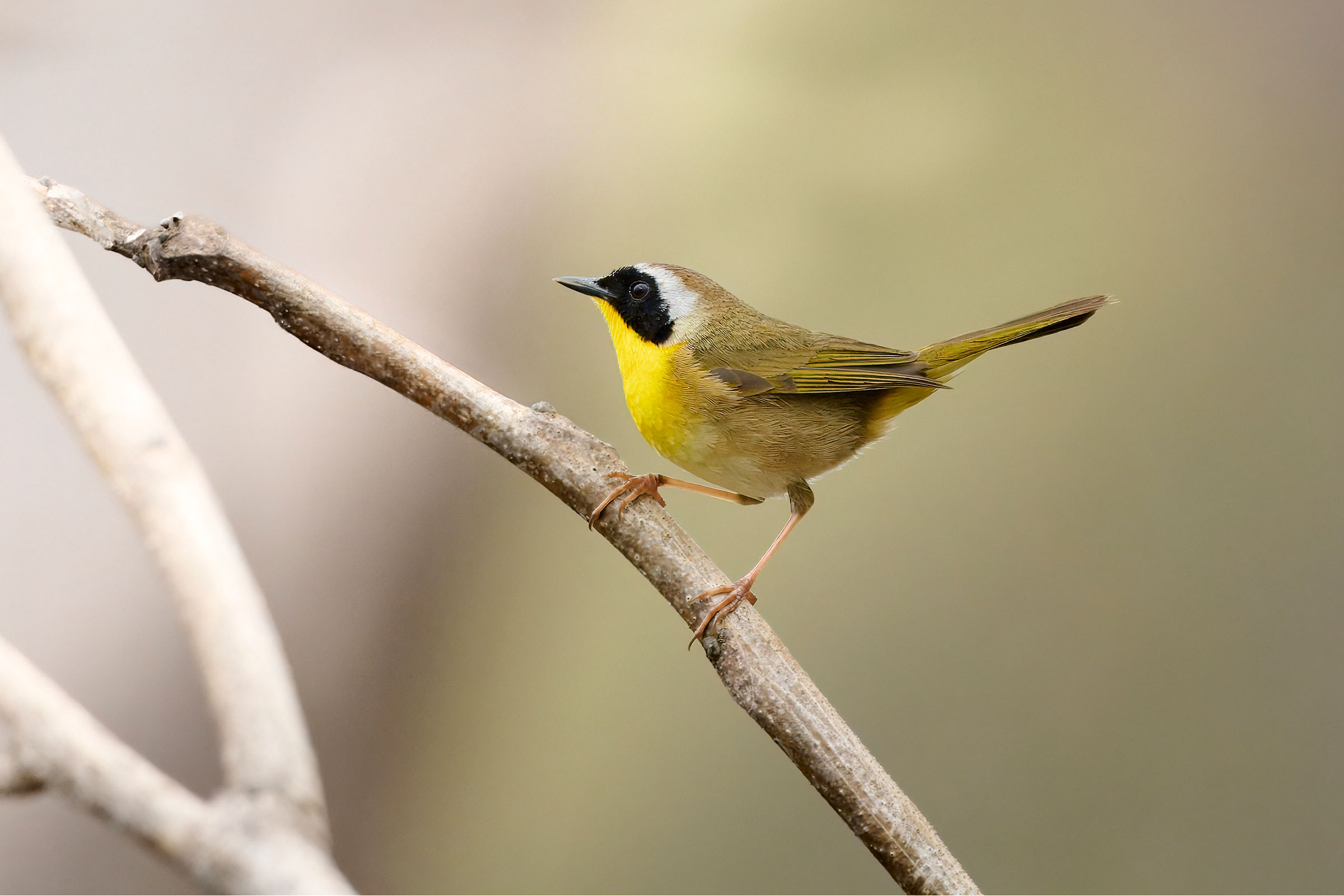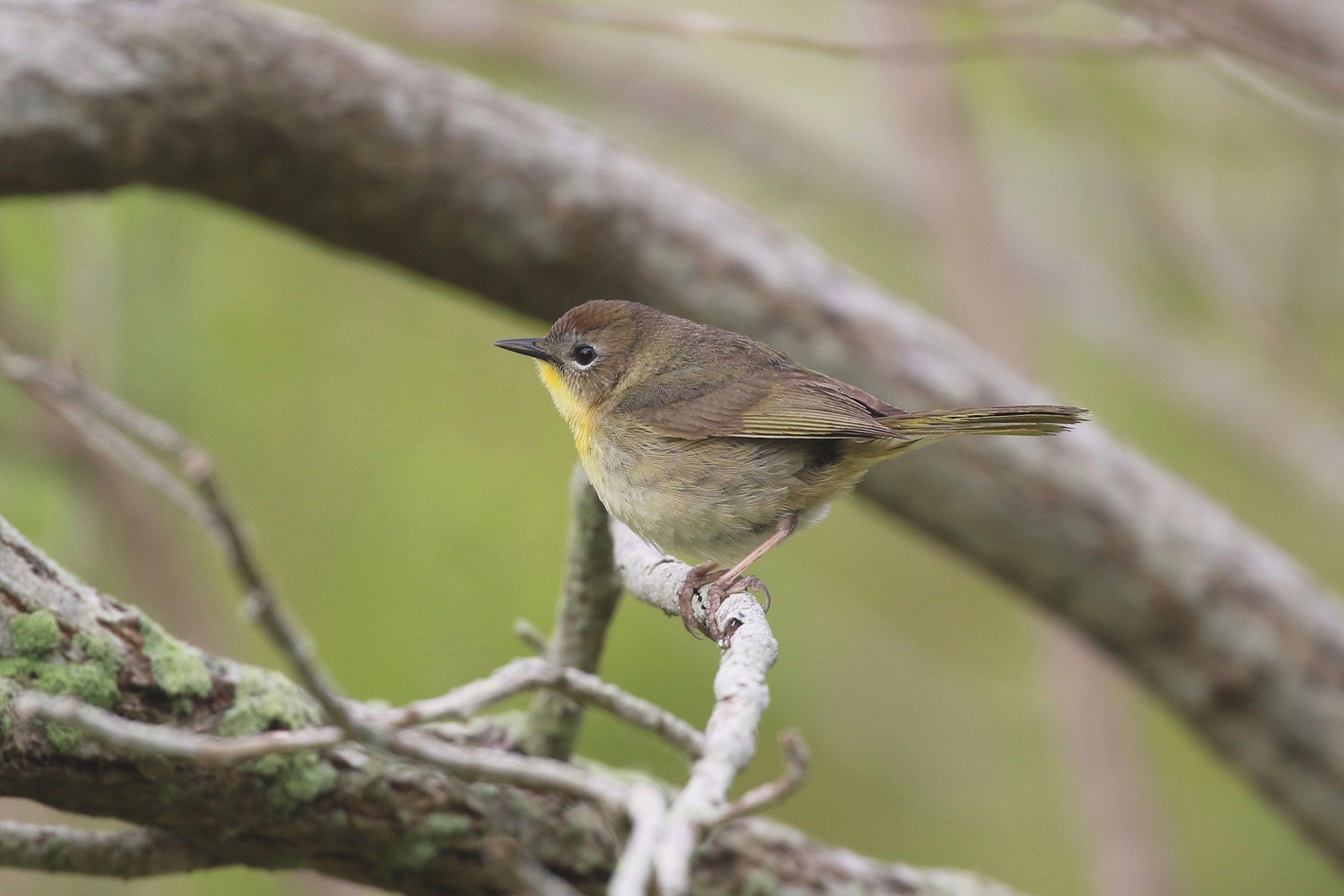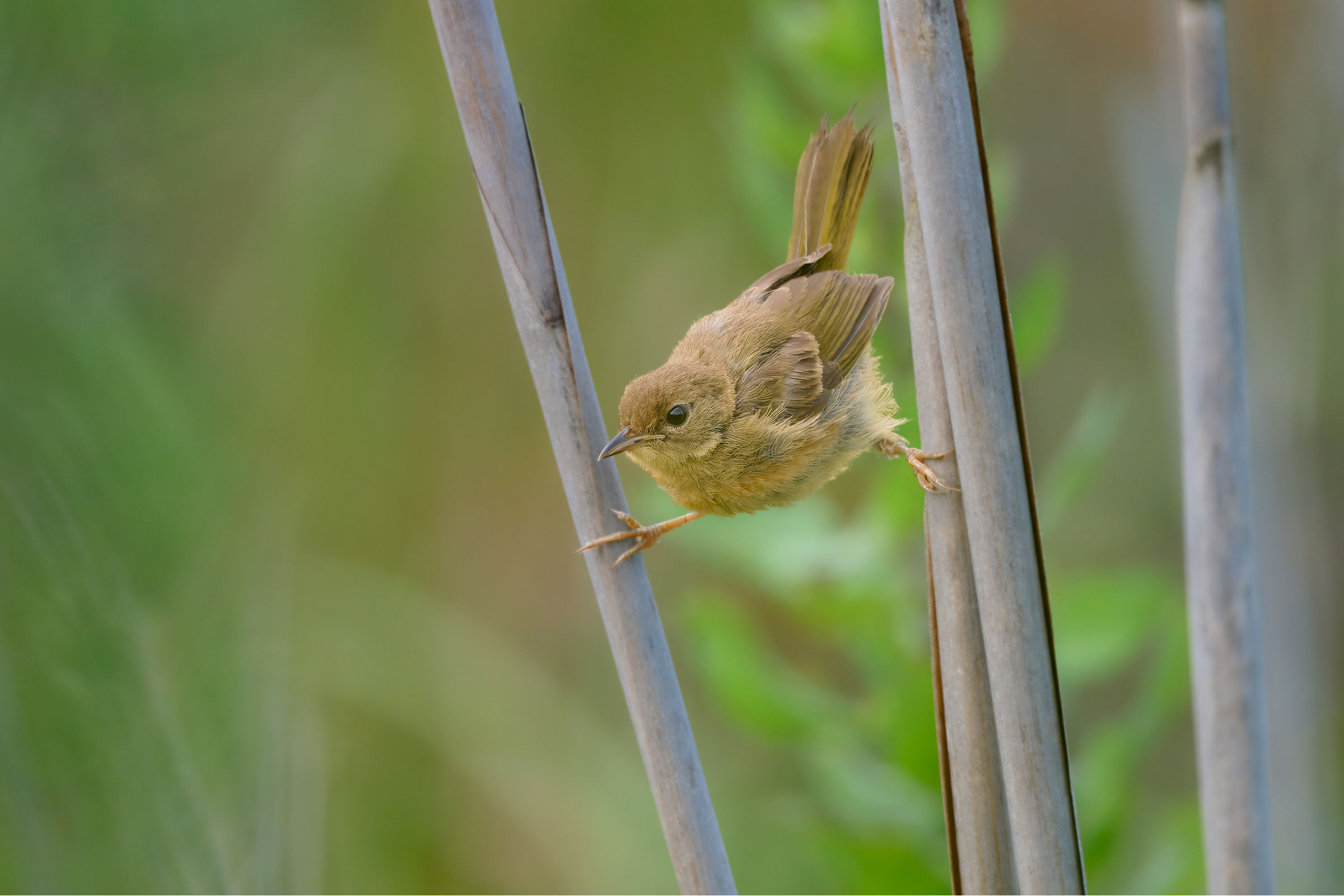Introduction
The incessant and emphatic witchety-witchety-witchety of a Common Yellowthroat can be heard ringing out in a variety of open habitats in Virginia. These tiny warblers with a black mask can nest on the edges of marshes, freshwater wetlands, open shrub habitats, rural road edges, or overgrown fields (including transmission rights-of-way) (Wilson 2014; Guzy and Ritchison 2020). They build their nests on or near the ground in sedges, grasses, reeds, cattails, or briars (Guzy and Ritchison 2020).
Breeding Distribution
Common Yellowthroats occur throughout the state, with the highest likelihood of occurrence in the southern-central portion of the Piedmont region and throughout the Coastal Plain region. Their distribution is less consistent in the Mountains and Valleys region, where they are most likely to occur in the southwestern corner and in rural valleys, such as the Shenandoah Valley, where there are more suitable wetlands, grasslands, shrublands, and edge habitats (Figure 1).
Due to model limitations, probability of occurrence for the First Atlas and the change between Atlas periods could not be modeled (see Interpreting Species Accounts). For more information on Common Yellowthroat’s distribution during the First Atlas, please see the Breeding Evidence section.

Figure 1: Common Yellowthroat breeding distribution based on probability of occurrence (Second Atlas, 2016–2020). This map indicates the probability that this species will occur in an Atlas block (an approximately 10 mi2 [26 km2] survey unit) based on environmental (including habitat) factors and after adjusting for the probability of detection (variation in survey effort among blocks).
Breeding Evidence
Common Yellowthroats were confirmed breeders in 198 blocks and 68 counties and found to be probable breeders in an additional 35 counties (Figure 2). Although detected throughout the state, fewer detections were recorded in the western part of the Mountains and Valleys region where there is more high-elevation forest, which is not suitable habitat for Common Yellowthroat breeding. During the First Atlas, confirmed breeders were also recorded in all regions of the state (Figure 3).
The earliest confirmed breeding behavior was on April 18 when adults were seen carrying nesting material. Various other breeding behaviors were observed; however, breeding was confirmed primarily through observations of adults carrying food (May 14 – August 10), recently fledged young (June 2 – August 13), and adults feeding young (June 14 – August 25).
For more general information on the breeding habits of this species, please refer to All About Birds.

Figure 2: Common Yellowthroat breeding observations from the Second Atlas (2016–2020). The colored boxes illustrate Atlas blocks (approximately 10 mi2 [26 km2] survey units) where the species was detected. The colors show the highest breeding category recorded in a block. The numbers within the colors in the legend correspond to the number of blocks with that breeding evidence category.
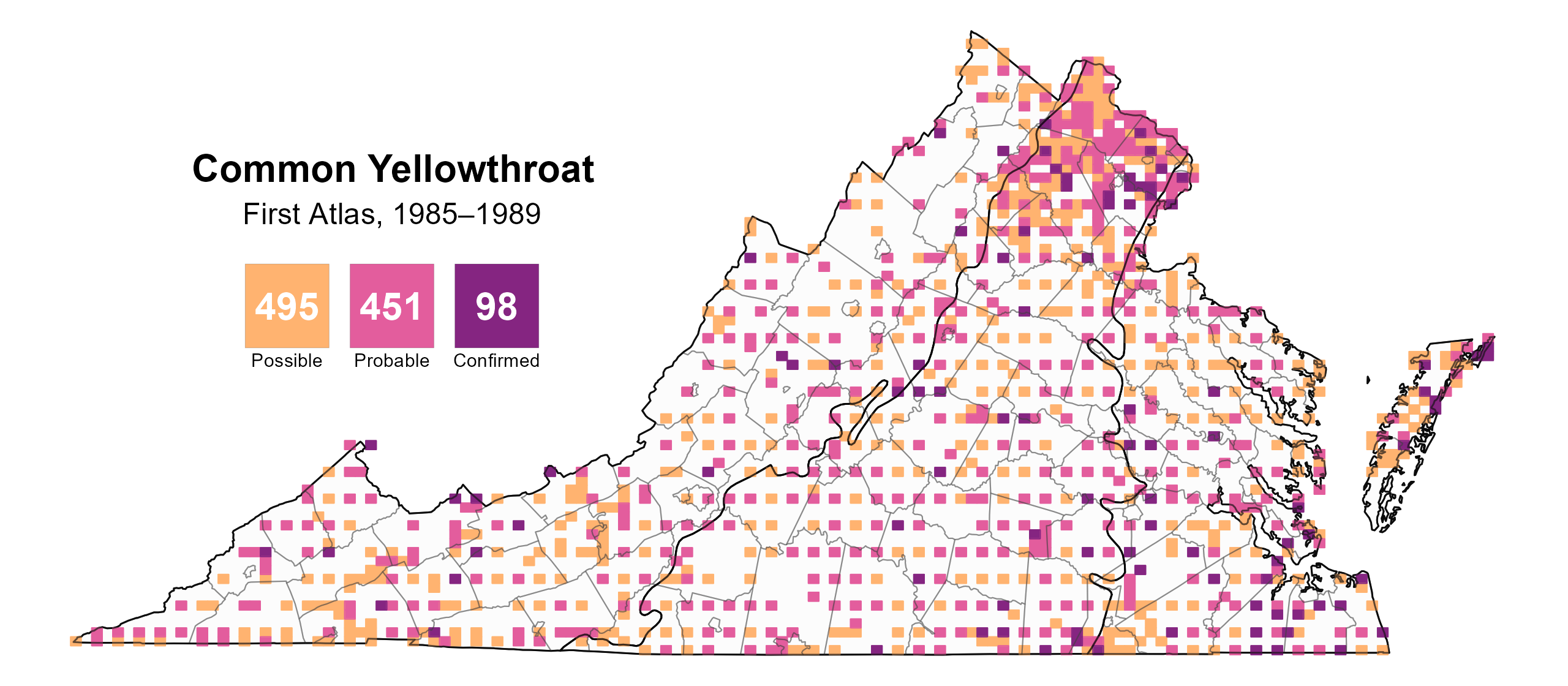
Figure 3: Common Yellowthroat breeding observations from the First Atlas (1985–1989). The colored boxes illustrate Atlas blocks (approximately 10 mi2 [26 km2] survey units) where the species was detected. The colors show the highest breeding category recorded in a block. The numbers within the colors in the legend correspond to the number of blocks with that breeding evidence category.
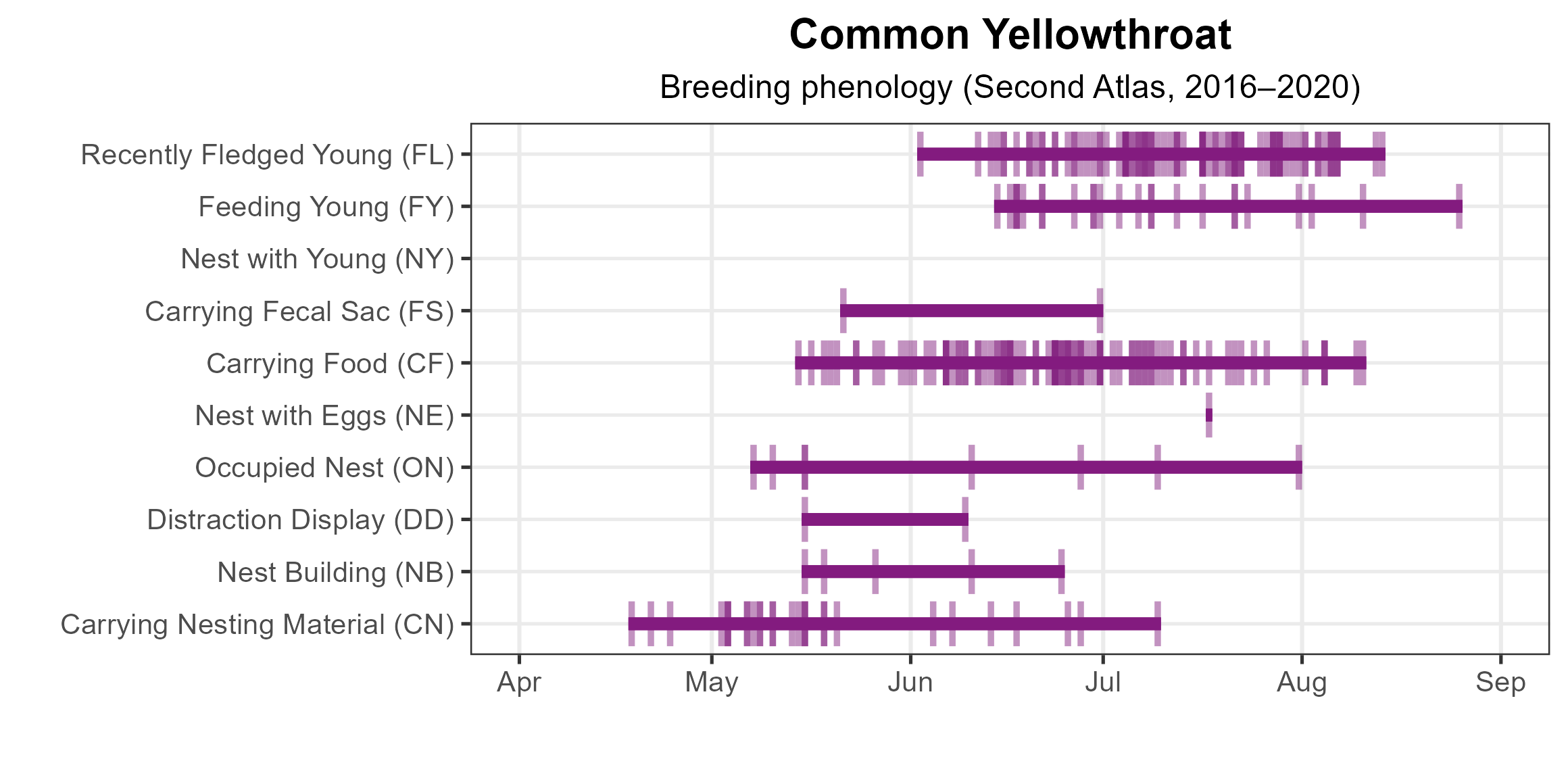
Figure 4: Common Yellowthroat phenology: confirmed breeding codes. This graph shows a timeline of confirmed breeding behaviors. Tick marks represent individual observations of the behavior.
Population Status
Common Yellowthroat relative abundance was estimated to be highest in the wetlands and marshes of the Coastal Plain region; modest and sporadic in the more open, grassland, and shrubland habitats in the Piedmont region; and generally low in the Mountains and Valleys region (Figure 5).
The total estimated Common Yellowthroat population in the state is approximately 364,000 individuals (with a range between 273,000 and 492,000). Based on the North American Breeding Bird Survey (BBS), the Common Yellowthroat population declined by a significant 0.95% annually from 1966–2022 in Virginia, and between Atlas periods, Common Yellowthroat decreased by a nonsignificant 0.39% per year from 1987–2018 (Hostetler et al. 2023; Figure 6).

Figure 5: Common Yellowthroat relative abundance (Second Atlas, 2016–2020). This map indicates the predicted abundance of this species at a 0.4 mi2 (1 km2) scale based on environmental (including habitat) factors. Abundance values are presented on a relative scale of low to high.

Figure 6: Common Yellowthroat population trend for Virginia as estimated by the North American Breeding Bird Survey. The vertical axis shows species abundance; the horizontal axis shows the year. The solid line indicates the estimated population trend; there is a 97.5% probability that the true population trend falls between the dashed lines. The shaded bars indicate the First and Second Atlas periods.
Conservation
Although Common Yellowthroats have experienced a slight decline in the state, they are generally common and widespread throughout Virginia and their range (Guzy and Ritchison 2020). They are not considered a species of special concern, and no specific conservation projects are underway in Virginia. However, any effort that protects the open, thickly vegetated habitats they inhabit will be beneficial (Guzy and Ritchison 2020). Further research on their decline in the state could also provide useful information on actions need to prevent further losses.
Interactive Map
The interactive map contains up to six Atlas layers (probability of occurrence for the First and Second Atlases, change in probability of occurrence between Atlases, breeding evidence for the First and Second Atlases, and abundance for the Second Atlas) that can be viewed one at a time. To view an Atlas map layer, mouse over the layer box in the upper left. County lines and physiographic regional boundaries (Mountains and Valleys, Piedmont, and Coastal Plain) can be turned on and off by checking or unchecking the box below the layer box. Within the map window, users can hover on a block to see its value for each layer and pan and zoom to see roads, towns, and other features of interest that are visible beneath a selected layer.
View Interactive Map in Full Screen
References
Guzy, M. J. and G. Ritchison (2020). Common Yellowthroat (Geothlypis trichas), version 1.0. In Birds of the World (P. G. Rodewald, Editor). Cornell Lab of Ornithology, Ithaca, NY, USA. https://doi.org/10.2173/bow.comyel.01.
Hostetler, J. A., J. R. Sauer, J. E. Hines, D. Ziolkowski, and M. Lutmerding (2023). The North American breeding bird survey, analysis results 1966–2022. U.S. Geological Survey, Laurel, MD, USA. https://doi.org/10.5066/P9SC7T11.
Wilson, M. D. (2014). Avian survey of Fort Lee, Virginia 2014. Center for Conservation Biology Technical Report Series, CCBTR-14-14. College of William and Mary and Virginia Commonwealth University. Williamsburg, VA, USA. 27 pp.

